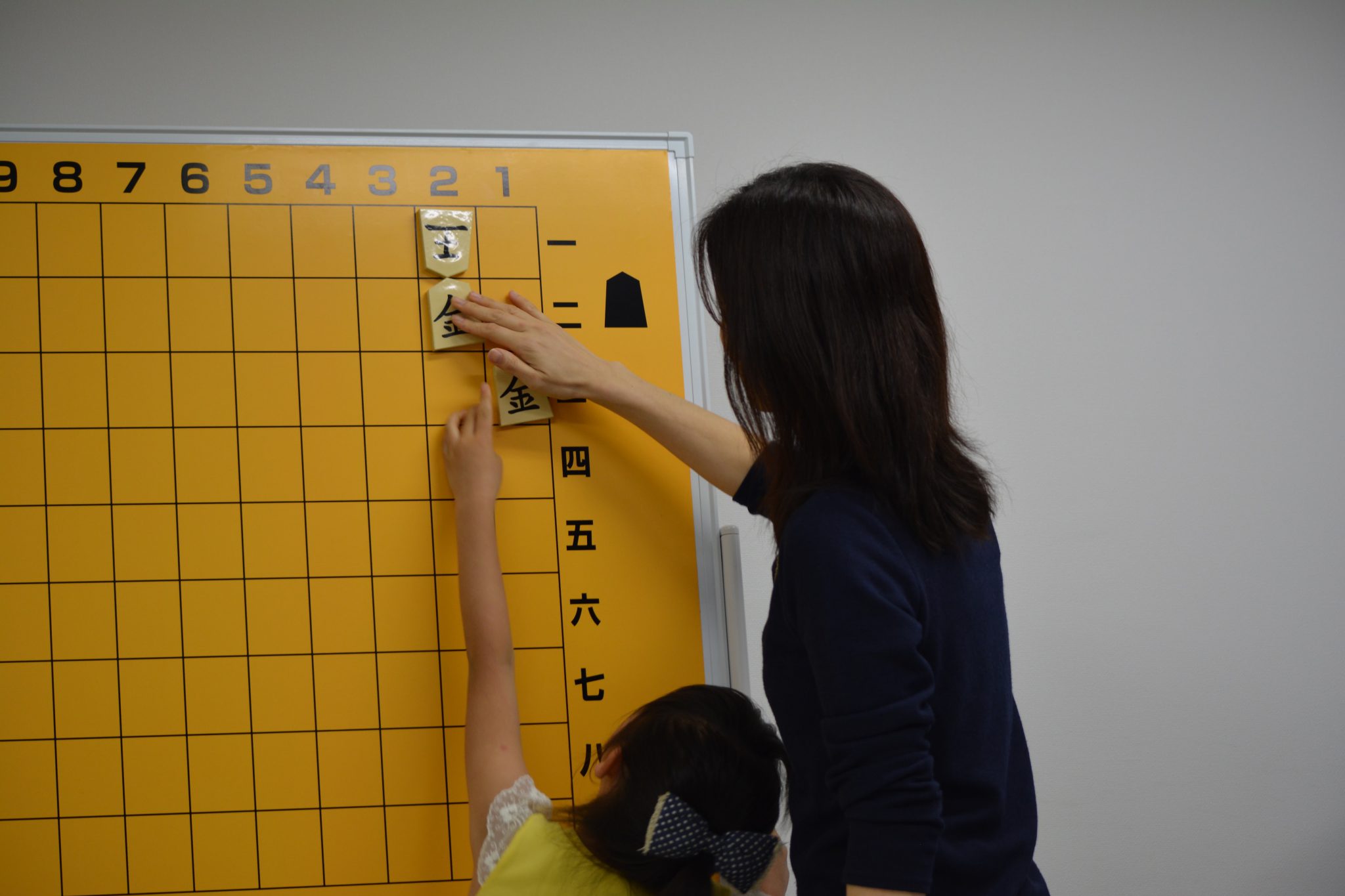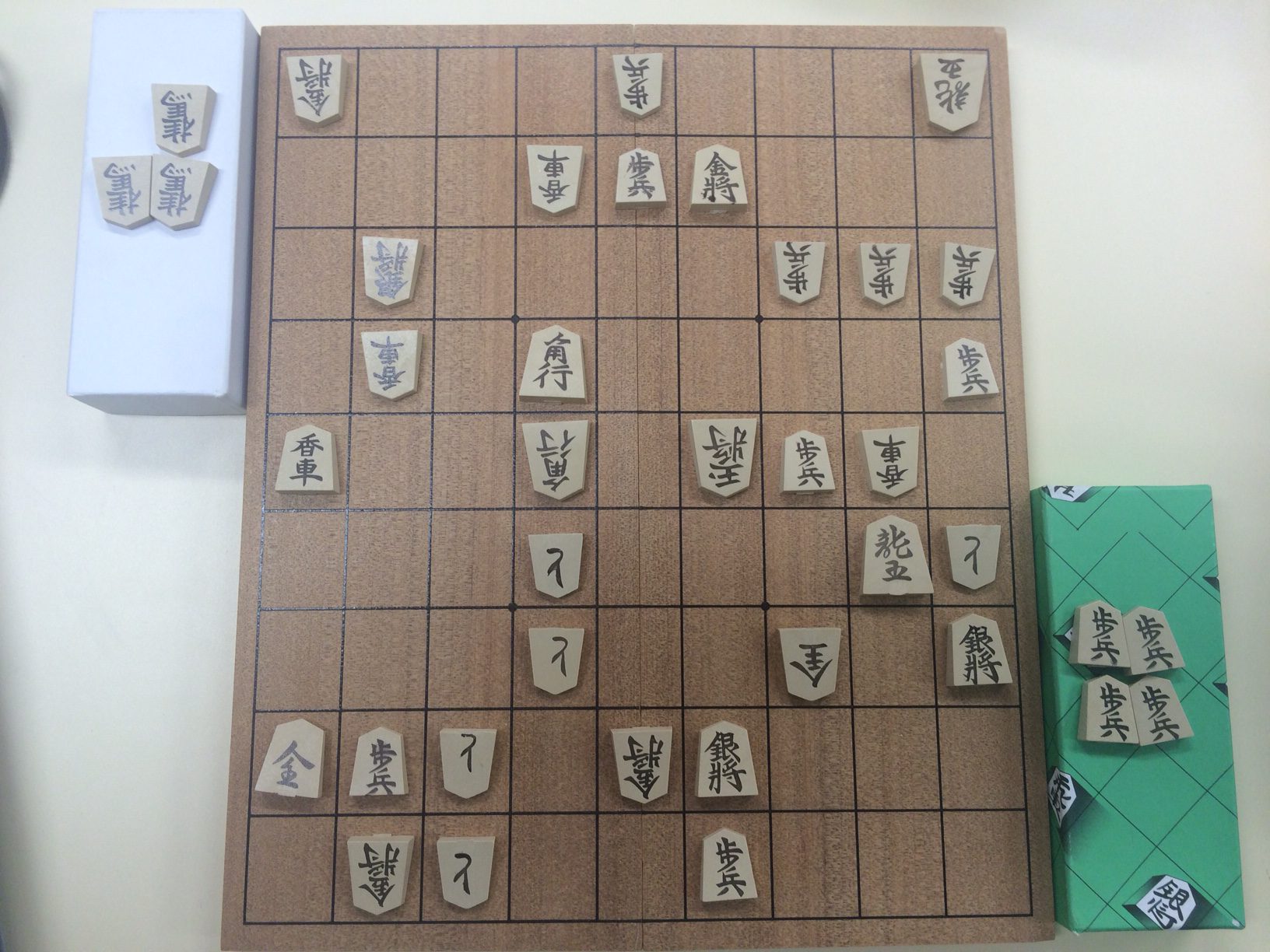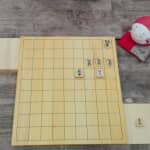Shogi 19 October 2016
Five Enjoyable Approaches to Learn Shogi
Today, I would like to talk about Shogi learning methods for novice players.
“What should I do to be strong?” This is the question that I am often asked.
The standard answer is as follow.
“You should copy pros’ piece moves, solve Tsume Shogi or Mate problems, and take part in actual matches.”
Yet, for those beginners who want to learn Shogi as a hobby, I would like to introduce more enjoyable learning approaches today since all the Shogi beginners are not hoping to be a pro in the future.
Some play Shogi just for fun. Others play Shogi to enhance academic skills, or as a family entertainment. People have different reasons to play Shogi.
So, I think it is also beneficial to share more enjoyable learning methods without stressful practices.

So, today let me talk about fun but still effective learning methods for novices who have just learned the basic rules and piece moves.
1. Solve many easy Tsume Shogi problems.

As many say, I also think that Tsume Shogi is important. Yet, it is very hard even for a professional player to solve a difficult puzzle for many hours. So, children never find that easy.
So, let’s divide time to solve Tsume Shogi into two parts. The first part is for easy ones. You solve many easy “Ittedume (Mate-in-1. Mate problem in one move)” problems of which level is lower than your current level.
Get an easy Tsume Shogi book and solve the problems many times. You learn and remember the process for a checkmate through solving the same problems several times, and you can gain a sense of achievement.
For example, measure a solving time for 10 or 20 problems.
“It took only blah blah minutes to solve the puzzles today. It was much faster than the last time.”
You can actually see and feel improvement, and that helps you to maintain your motivation.
One of my students marks the problems he failed and repeatedly solves those. He needs less and less time to solve the puzzles, but finds that he always fails the same puzzles. Then, he realizes the types of puzzles he finds hard and his issues with Shogi.
2. Try some difficult problems as well.
The second half is to solve difficult problems. Along with many easy ones, try some difficult ones occasionally. I recommend that you challenge problems just a little above your current level. As I said in the above, solving a difficult Tsume Shogi problem is very tough. So, do not lay too heavy burden on your shoulders.
More specifically, if a problem takes more than five minutes for you to solve, then, skip it. I think it is also meaningful to try and think about the problem, even though you cannot find an answer. However, if you come to hate Shogi by doing so, that is totally meaningless.
I have an acquaintance who likes to study the opening phase of a game. He purchased a huge amount of Tsume Shogi problems and solved them to win in a tournament. As a result, he came to be fed up with Shogi. 🙂
Taking a good balance is important, and thus, you need to study something you do not like to some extent. Yet, never push yourself too hard. Find good and appropriate amount of work to train yourself.

The above picture is a famous 611 move Tsume Shogi. Try and solve it, if you like.
3. Remember Shogi proverbs.
There are Shogi proverbs useful to improve your Shogi skills. These are born through people’s
actual experiences in Shogi matches. If you remember these proverbs, they sometimes help you
find a right move.
I introduced two Shogi proverbs in the below article.
Today, I share the five best proverbs I often talk to beginners.
Number 5 UMA (Horse)’s defense is worth as mush as that of three pieces of KIN (Gold) and GIN (Silver).
UMA is a promoted KAKUGYO (Bishop). The meaning of this proverb is that UMA is good for offense, but it is also effective for defense and worth as much as three pieces of KIN and GIN.

UMA’s defense is worth as mush as that of three pieces of KIN and GIN. This proverb expresses the value of a promoted piece used in your own camp. Let’s pay attention at defense as well as offense.
Number 4 FU (pawn)-anchored KIN is more solid than a rock.
This proverb tells that a formation of KIN anchored by a piece of FU in hand is extremely strong.
The opponent’s HISHA (Rook) is a very strong offensive force. To stop this HISHA, FU-anchored KIN is very effective.
This is additional information, but one of my senior ladies Shogi players once said the following. 🙂
“FU-anchored KIN, be cautious about two pieces of FU in the same file.” We need to check if there is an existing piece of FU on the same file before dropping FU.
*”Two pieces of FU in the same file” is illegal, and you will lose by that.
Number 3 Open up the fight with FU’s “Tsukisute (Push sacrifice. Act of pushing FU to attack the opponent’s piece, aiming to sacrifice it.)”
This proverbs means that a game starts off with FU’s sacrifice. A piece of KEI (Knight) and a piece of GIN can move forward with Fu’s sacrifices.
FU has the largest numbers among the Shogi pieces, and there are many strategies with FU such as “Tsuki FU (Act of making a checkmate position by pushing FU without promotion, as opposed to the illegal FU-drop mate)” and “Tare FU (A technique to drop FU to a square where it can become Tokin in the next move without capturing anything; or such FU itself. ).” Effective use of FU improves your Shogi techniques and skills.
Number 2 Check your “Oute (checks).”
“Oute (check)” is a move that threatens to capture the opponent’s GYOKU (King) in the next move. We feel good to do Oute. Yet, we can never capture the opponent’s GYOKU if we simply play tag with the GYOKU. We also need to set a trap.
I often talk about a goldfish scooping game as a metaphor for Shogi check to children. It is boring and also very difficult to capture gold fish if we just chase after it with a small net. We need some tactics such as setting a trap beforehand. I teach the strategies with some pictures for easy understanding of the notion of a good approach of Oute.
Number 1 Move GYOKU and HISHA (Rook) to the opposite sides.
HISHA is for offense, and thus, a battle is likely to occur around it, inevitably. So it is better for your GYOKU to stay away from HISHA to avoid easy Oute. It is dangerous for GYOKU to be around HISHA.
I myself memorized these proverbs when I was small. I believe our predecessors made these to teach Shogi to beginners.
There are surely many situations to which these proverbs are inapplicable. So, let’s use the proverbs for reference, and figure out the next moves by ourselves.
4. Understand the values of the pieces.
Never let the opponent capture your piece for free. This is relatively easy to understand. Yet, novice players often engage in unprofitable exchange of pieces.
I believe it is essential to remember which piece to be exchanged with which to make a gain. So I recommend that you play the following games to remember the piece values.

- When you play “Mountain pull-down” game, give each piece points. For example, GYOKU has ten points, HISHA has nine, and so on. It helps you to understand values of each piece.
- Play “Poverty” with Shogi pieces. Give a rank to each piece. For example, GYOKU is the highest, HISHA comes the second, KAKUGYO is the third and so on.
Through playing these games, you will realize the values of each piece and understand good deals in Shogi.
5. Learn only one tactic.
Now, you are almost ready for an actual match. Here is the last but not least point I want to share with you.

You solve Tsume Shogi problems. You know Shogi proverbs. Yet, you don’t know what to do at the opening phase of a Shogi game unless you learn “Joseki (standard move sequences).”
There are various tactics in Shogi. Let’s learn at least one.
For example, “Swinging HISHA and Mino castle” and “Static HISHA and Boat castle.” Each strategy has a unique feature. So you can take a tactic of your choice depending on your preferred playing style such as offensive weighted or defensive weighted.
I have shared easy Shogi learning approaches today. I think that it is not good at all if you come to hate Shogi by cramming into Shogi learning to be a strong player.
I think it is essential to enjoy yourself and find your own way to learn Shogi. If you can find an approach that fits you, I bet you enjoy Shogi more and get stronger as well.



